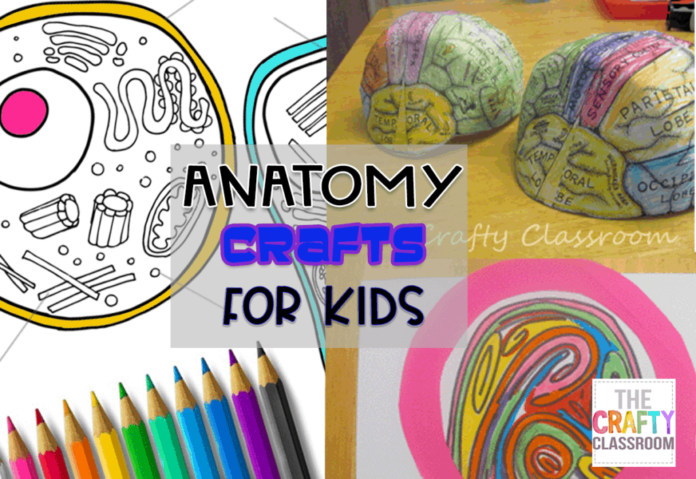Teaching children about human anatomy offers a fun and insightful way to explore the complexities of the human body. From the microscopic details of cells to the functions of the brain, the skin, and the eye, anatomy provides an exciting learning journey. Making these topics interactive through hands-on activities helps children better understand the systems that keep us alive while fostering creativity and curiosity.
Here’s a breakdown of some engaging crafts and activities that will bring human anatomy to life for kids:
1. Learning About Cells
Cells are the foundation of all living organisms, making them an essential starting point in studying anatomy. To help children grasp this concept, cell coloring and labeling sheets are a great tool. These printable resources include diagrams of animal and plant cells, complete with a reference chart and notebooking pages for kids to label and color. To add a tactile element, you can have kids create 3D cell models using clay or playdough, providing a hands-on understanding of cell structure.
2. Exploring the Brain & Nervous System
The brain and nervous system are the body’s communication networks, controlling everything from movement to thought. Craft projects such as modeling the brain with clay or creating a spinal cord using straws can help children visualize how the brain and nerves work. A fun activity could include tracing the path of nerve signals and discussing how they allow us to react to stimuli and perform basic functions.
3. Discovering the Human Eye
The eye is one of the most fascinating organs in the human body. Eye models and optical illusions are an engaging way to teach children about vision. By constructing models of the eye, children can learn about the cornea, retina, and pupil. You can also explore visual tricks that demonstrate how the brain processes what we see, adding an element of fun and intrigue to the lesson.
4. Understanding the Skin
The skin is the body’s largest organ and acts as a protective barrier. Skin-themed crafts can help illustrate its structure. For example, a 3D skin model using cotton balls, fabric, and jelly can show the different layers of the skin. Sensory perception activities, such as guessing textures or temperatures, can also help children understand how skin allows us to feel and experience the world around us.
5. Fun and Creative Learning
Hands-on activities and crafts not only make learning about human anatomy fun but also deepen children’s understanding. By using interactive methods, like building models or exploring the senses, kids engage their minds and bodies in the learning process. This approach makes the material more relatable and memorable.
Through creative projects, children learn about the human body in a way that connects them to their own health and well-being. Whether it’s coloring cells, crafting a brain model, or experimenting with sensory activities, these hands-on lessons make the complexities of human anatomy accessible and exciting for young learners.
By incorporating crafts and interactive activities, you can help children see the wonder and beauty of the human body while fostering a love for science and learning.
4o

